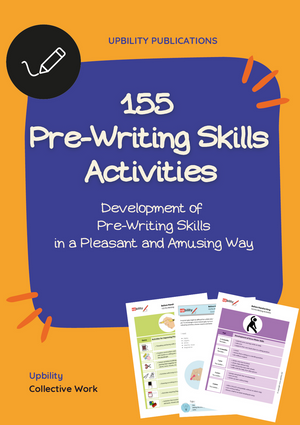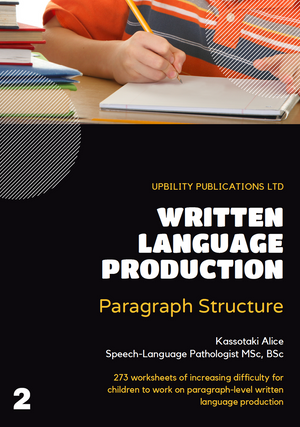
What is tantrum: Practical strategies for parents
Dealing with your child's tantrum can be challenging. Learn what causes these bouts of frustration and how to respond effectively. This guide provides clear strategies for managing tantrums and promoting calm in your household.
Key takeaways
- Tantrums are a common developmental phase in early childhood, often caused by children's inability to express their needs or feelings and can be influenced by hunger, fatigue and emotional overload.
- Parents can proactively manage tantrums by recognising precursive signs and triggers such as fatigue, hunger and disruption of routine, allowing for early intervention and prevention of escalation.
- Effective strategies for managing outbursts include maintaining composure, using distraction techniques, setting clear boundaries, praising positive behavior, teaching emotional regulation, and seeking professional help when outbursts present red flags such as danger or self-harm.
The nature of anger outbursts: Why they happen 
Tantrums naturally occur as children strive for greater independence as part of their developmental process. They usually start around 1 year of age and persist until 2 to 3 years of age, gradually decreasing as the child ages and communication skills improve. But what causes these emotional outbursts? A key factor is difficulty in communicating. When children have difficulty expressing their needs or feelings effectively, tantrums occur.
Children's limited emotional regulation skills may also contribute to anger outbursts, as they may find it difficult to manage and express their child's emotions effectively.
Hunger and tiredness of the child, which are important external factors, can also contribute to infant tantrums. When children experience hunger or fatigue, they may become more irritable and less patient, increasing the likelihood of having tantrums.
Tantrums occur in early childhood and can also be attributed to their reaction to life's limitations and unmet needs or desires. They often occur when children experience intense emotions that they find difficult to manage, with anger and frustration often serving as triggers.
Identifying triggers for anger outbursts: Recognising the signs

Parents can anticipate and possibly prevent anger outbursts by recognizing the signs and triggers. Prior to a child's anger outburst, children may exhibit behaviors that indicate their escalating frustration and their struggle to regulate their emotions. This is often seen in repetitive scenarios or when they are:
- tired
- hungry
- anxious
- experiencing denial of their desires
By knowing these signs and triggers, parents can intervene and help their child manage their emotions before a tantrum occurs.
Hunger and fatigue are often observed to be influential factors that can cause substantial emotional reactions in children, resulting in outbursts
Addressing these conditions can help achieve fewer outbursts and better emotional regulation. Recognizing these triggers can help parents intervene early, preventing a full-blown tantrum.
Just as each child is unique, triggers for anger outbursts differ. Some children may have anger outbursts when they are tired, while others may have outbursts when they are hungry or when their routine is disrupted. Learning to recognize these triggers is a critical step in effectively managing anger outbursts.
Effective ways to manage anger outbursts

Keeping calm is the first step when an angry outburst is in progress. To maintain their composure when dealing with their child's tantrums, parents can use various strategies, such as reminding themselves of their strength, confidence and competence. They can also remain calm by practicing deep breathing and engaging in relaxing activities.
Effective distraction techniques play an essential role in managing anger outbursts. For a young child, this could include changing the topic of conversation, suggesting a simple game or activity, or using music to calm the child. Distractions can divert the child's attention away from what is causing their frustration and help them to calm down.
It is also vital to set limits. It is important to let your child know that while it is okay to feel frustrated or upset, certain behaviors are not acceptable. This could mean setting rules about hitting, kicking or throwing objects during a tantrum.
Remember that a child often has tantrums when they have difficulty expressing their feelings. Encourage your child to talk about their feelings and reassure them that it's okay to feel upset or frustrated. This can help them express their feelings in a more constructive way.
Teaching emotional regulation

Teaching emotional regulation is important for managing anger outbursts as it helps children:
- Better manage and recover from trauma or adverse events
- To cope with self-regulation problems
- Learn to choose appropriate behaviour based on their emotions
Teaching emotional regulation can begin as early as the first six months of a child's life and is a critical stage in helping children learn to regulate more complex emotions during infancy. This can include teaching children to recognize their emotions, providing coping strategies, and modeling healthy emotional regulation.
Strategies may include deep breathing exercises, mindfulness activities or the use of a calming jar. Remember that these skills take time to develop, so be patient with your child and offer lots of praise and encouragement as they learn.


Encourage positive behaviour: reinforcement and praise

By encouraging positive behaviour through reinforcement and praise, the likelihood of outbursts can be reduced while promoting good behaviour. The effect of reinforcement on a child's behaviour involves increasing desired behaviour through positive or negative reinforcement.
Positive reinforcement, such as praise or rewards, effectively encourages positive behaviour.Cases of positive reinforcement for good behaviour include:
- Showing approval through applause and cheers
- Physical displays of affection, such as a high five or a hug
- Giving a thumbs up
- Offering tangible rewards, such as treats or verbal praise
The impact of praise on a child's behaviour is positive, as it reinforces good feelings and motivation, making them more cooperative, persistent and hard-working. In addition, it promotes pro-social behaviour, such as sharing, taking turns and communicating politely.
Effective strategies for promoting positive behavior in children include:
- Giving children positive attention when they are behaving well
- Offer praise for good behavior
- Provide positive reinforcement when you give positive reinforcement when you give positive reinforcement to a child
This can help young children develop a positive self-image and encourage good behaviour, motivating them to continue to behave well.
Tips for handling explosions in social situations
Handling angry outbursts in public can be particularly challenging. Parents can effectively handle their child's anger outbursts in public using methods such as:
- Distracting the child with small toys, colouring books or games
- By making eye contact
- Offering physical comfort by providing physical comfort
- Providing physical contact by giving children physical contact
- Changing the environment
- Talking to the child
- Establishing clear guidelines for behaviour
- Use of positive reinforcement
- Direct assessment of the situation
- Relocate their child to a quiet area, if necessary
- Mentally prepare for possible future anger outbursts
During a public outburst, it is also vital that you communicate with your child. It is advisable for parents to communicate with their child during a public outburst through the following means:
- Maintaining a calm demeanor
- Keeping a calm demeanor
- Avoiding eye contact
- Avoiding talking condescendingly or negotiating during the outburst
Encouraging the child to take a moment and focus on their breathing can help calm them down, while consulting with the child's healthcare provider can provide additional guidance.
To prevent public outbursts, parents can implement preventive strategies such as
- Offering distractions with small toys, colouring books or games
- Maintaining eye contact
- Providing hugs
- Remaining calm
- Change of environment
These strategies can help prevent or defuse tantrums in public places.
It may also be helpful to understand the triggers that cause public outbursts. Typical triggers that can lead to public outbursts include:
- fatigue
- hunger
- discomfort
- unfulfilled desires
- anger
- frustration
- conflict
- intense emotions
- fatigue
- boredom
- overstimulation
- feeling overloaded by the environment.
When to seek professional help
There are some red flags that parents need to be aware of, even though tantrums are a normal part of a child's development. Signs that necessitate professional intervention with childhood tantrums include
- frequent tantrums in older children, such as those around 8 years of age
- tantrums that lead to physical danger to the child or others
- anger outbursts that are atypical or severe
If outbursts persist for more than 25 minutes or if a child has difficulty regulating their emotions after an outburst, these signs may indicate more serious underlying issues. In these cases, it is recommended that you seek professional help and evaluate factors such as the child's diet and timing of eating.
Signs of self-harm during a child's tantrum, which is part of a child's behaviour, include actions such as
- hitting themselves
- scratching
- biting
- banging the head against objects
These behaviours should be taken seriously and may require professional intervention.
Parents can effectively communicate their concerns by:
- Providing detailed information about changes in routine
- Identifying triggers that occur at specific times of the day or during specific social situations
- Gaining an understanding of the purpose behind anger outbursts
Summary
In summary, while tantrums can be challenging, understanding why they occur, identifying triggers, and implementing effective strategies can make them easier to manage. Teaching emotional regulation, encouraging positive behavior, and knowing when to seek professional help are also vital. Remember, every child is unique and what works for one child may not work for another. Patience, understanding and consistency are key.
Frequently asked questions
What is irritation behaviour?
Tantrum behaviour refers to unplanned outbursts of anger and frustration, often manifested in physical or verbal disturbances, and usually caused by unmet needs or desires. It is a normal part of a child's development.
How can you stop an angry outburst?
When dealing with anger outbursts, offer comfort and reassurance to toddlers using the time-in approach, and for older children, use calming steps to help them recognize and cope with their feelings. If the tantrum is about attention, ignoring it can help reduce the behavior, while if it occurs after denial, keeping calm and redirecting your child to another activity can be effective.
Are tantrums healthy?
Yes, tantrums are a healthy and normal part of young children's development. It is their way of expressing their big emotions.
Why do the outbursts of anger happen?
Tantrums happen because children may have difficulty expressing their needs or feelings effectively due to communication difficulties or limited emotional regulation skills, and external factors such as hunger and fatigue can also trigger them.
When should I seek professional help for my child's tantrums?
It is important to seek professional help if your child's tantrums are frequent, severe or lead to physical danger to the child or others, or if the child exhibits self-harming behaviours during the tantrums. These signs may indicate the need for professional intervention.
Original content from the Upbility writing team. Reproduction of this article, in whole or in part, without attribution to the publisher is prohibited.
You can also read:
- Asperger Syndrome: a guide for family and friends
- The Link Between ADHD and Exercise
- Improve Your Child's Self-Esteem With Extracurricular Activities
Suggested Books on Special education :


